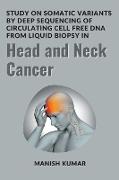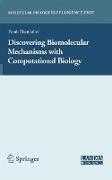Study on somatic variants by deep sequencing of circulating cell free DNA from liquid biopsy in head and neck cancer
BücherAngebote / Angebote:
Head and neck cancer (HNC) is the most commonly diagnosed cancer worldwide, with 90 95 % of the cases reported to be head and neck squamous cell carcinoma (HNSCC) (Choudhury et al. 2014). The disease is one of the most mystifying, commonly misdiagnosed and poorly understood entities because the lesion is often situated in a relatively inert space where only air and mucus are in transit. HNC can be silent for a long time without any primary symptoms. In Northeast India, the incidence of HNSCC is most familiar in the states of Assam, Manipur, Mizoram, Tripura, and Nagaland with an incidence of 54.48%, and is the sixth most common cause of death in males and seventh in females (Choudhury and Ghosh 2015). The practice of betel quid chewing (locally known as Kwai or tambul primarily consumed with betel leaf and slaked lime) (Sharan et al. 2012), along with smokeless tobacco products (locally termed as Khaini, Zarda, Gutkha ), cigarettes smoking, kitchen setup (closed kitchen setup, exposure to household smoke from burning firewood) is associated with the prevalence of HNC (Sharma et al. 2011). The mortality rate due to HNC is high partly due to the late diagnosis and inefficient therapy. In order to minimize the mortality, it is critical to identify novel HNC biomarkers with potential utility in early diagnosis to reduce the suffering and cost associated with the disease. In the past decade, management of cancer patients based on the molecular features of tumor tissue (tissue biopsy) has only given pool success in cancer diagnosis and monitoring (Ilié and Hofman 2016). Further, the limitations associated with tumor tissue, such as heterogeneity, tumor accessibility and difficulty in disease monitoring has limited the reliability of tumor tissue (Sholl et al. 2016, Doval et al. 2017). Therefore, to overcome some of the challenges described above, cancerderived circulating cell-free DNA (cfDNA) has become an appealing alternative to the conventional tumor tissue biopsy (Crowley et al. 2013). From 1999 onwards, various cancer associated markers have been identified in cfDNA which include CpG island methylation, KRAS, TP53, BRAF mutation and microsatellite instability (Schwarzenbach et al. 2009). However, even after cfDNA is yet to be accepted as a biomarker in early cancer diagnosis, clinically, and awaits further evidences to be proved as a gold standard in terms of screening, monitoring and management of cancer profile (Jiang et al. 2015).
Folgt in ca. 10 Arbeitstagen



